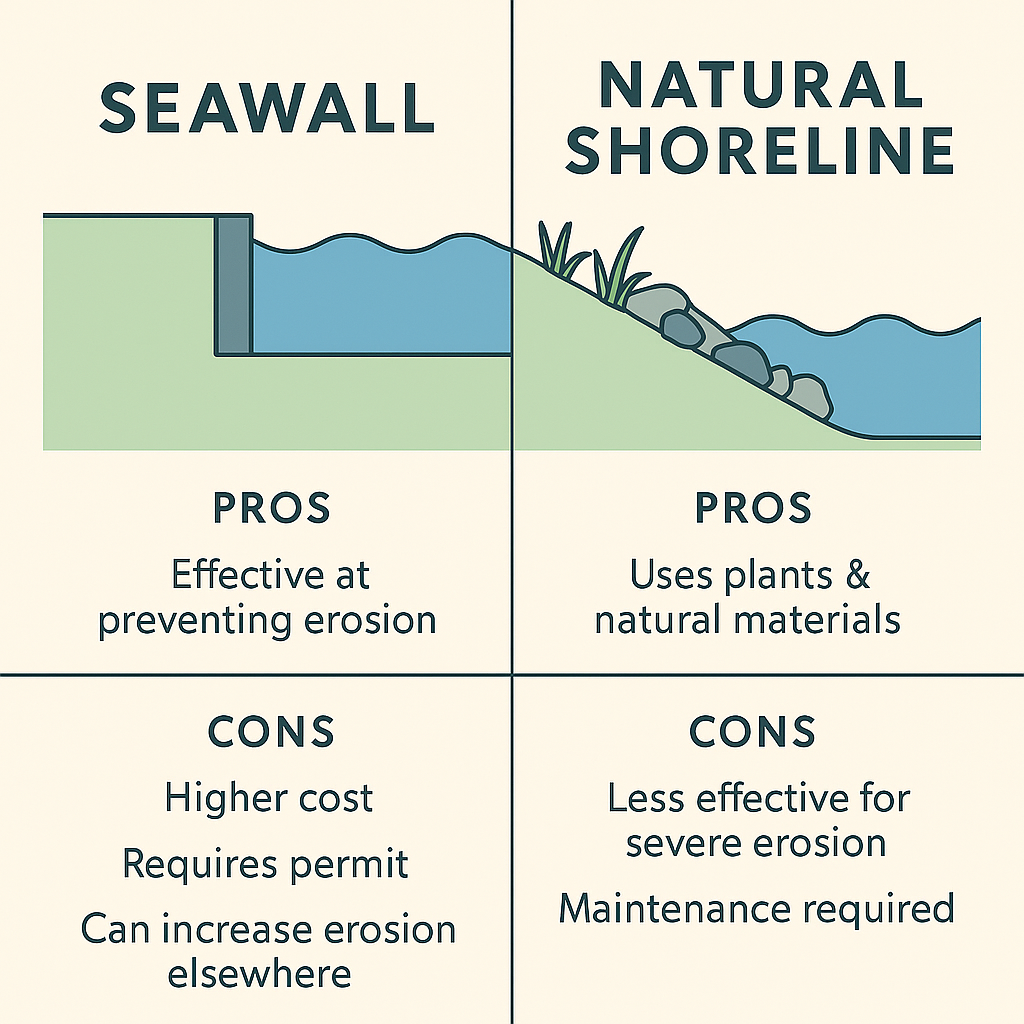Michigan Shoreline Erosion, Seawalls & Natural Protection Rules
Erosion occurs when waves, currents, or ice gradually wear away soil and destabilize the shoreline. On inland lakes, this may appear as gradual loss of beach or undercutting near docks. On the Great Lakes, erosion can be dramatic, especially during high-water years, and can threaten homes, septic systems, and roadways.
Michigan law recognizes that property owners have a legitimate interest in protecting their land, but it also requires, in their view, balancing that interest with environmental concerns and the public trust in navigable waters.

Seawalls and Hard Structures
One common response to erosion is the construction of a seawall, bulkhead, or other hard structure. These barriers can slow erosion on a specific parcel, but they often increase erosion elsewhere along the shoreline. For this reason, the Michigan Department of Environment, Great Lakes, and Energy (EGLE) closely regulates their installation and repair.
A permit is generally required before constructing, repairing, or replacing a seawall. EGLE will consider factors such as the type of material, the effect on aquatic habitat, and whether a less intrusive option could achieve the same result. Failure to secure a permit can result in enforcement actions, civil fines, and even orders to remove the structure.
Natural Shoreline Protection Alternatives
In recent years, Michigan has emphasized “soft” or natural shoreline engineering. These methods use natural materials like rock, logs, fiber rolls, and deep-rooted native plants to stabilize soil. Natural protection can reduce erosion while preserving fish spawning habitat and water quality.
While natural methods may not be suitable for every site, they are often viewed more favorably by regulators and may qualify for streamlined permitting. For many inland lakes, natural shoreline restoration projects can be effective, attractive, and legally safer than concrete or steel seawalls.
Staying Compliant and Protecting Your Property
If you are experiencing shoreline erosion, the first step is to evaluate the scope of the problem and document it with photos and surveys. Contractors familiar with riparian projects can help design compliant solutions.
Erosion is a serious problem, but with careful planning and compliance, Michigan lakefront owners can protect their investments while preserving the natural beauty and ecological health of the state’s waters.